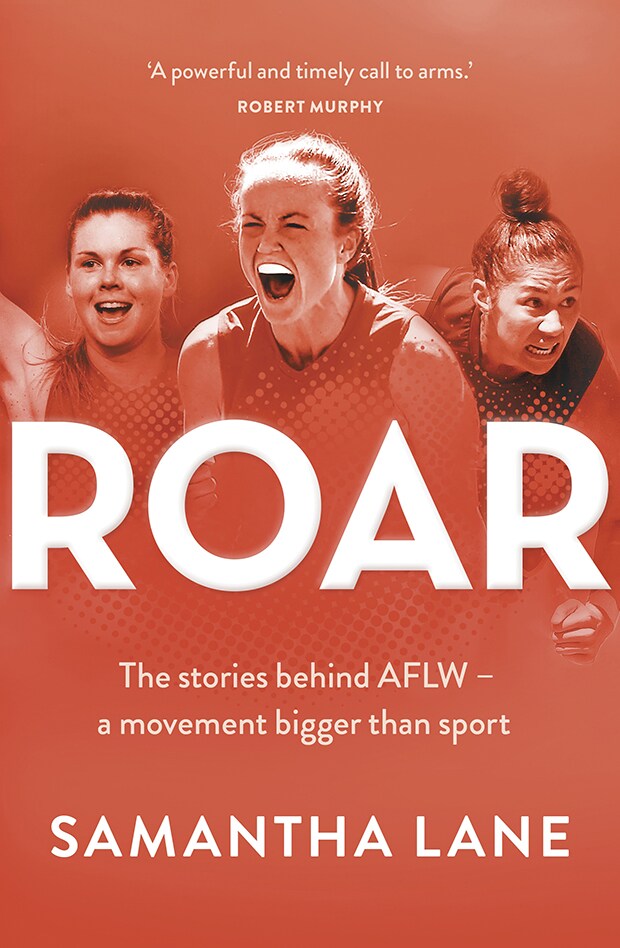Craig’s second enlightenment occurred four years later – and Cooper was again responsible.
Craig had relocated to Queensland to take up a new state football development manager’s post.
Part of the gig was overseeing events in North Queensland, and one of these was the 2013 national women’s carnival, which was played in Cairns.
Craig had to attend but didn’t necessarily have to watch the footy, which is where Cooper came in with a covert masterstroke to ensure he did.
Giving him no room to decline, she guaranteed Craig’s eyeballs would be on every minute of play by enlisting him for the live online commentary throughout the week.
That’s how Craig first laid eyes on young Queensland trio Leah Kaslar, Bre Koenen and Kate Lutkins. But it was Kira Phillips, fresh out of the WA under-18s, who flicked a light switch in his mind.
‘In one game at that meet she ran back with the flight of the ball at a million miles an hour, took a mark – courageous as all hell – and somehow got through oncoming cavalry. She had a run, she bounced and then she kicked a goal. I thought, “Wow, that’s simply amazing.”
The ferocity
Craig returned to the AFL Queensland office raving. When his boss, former Fitzroy star Michael Conlan, checked in on how the women’s nationals had gone, he was unprepared for the answer.
‘I said, “Mate, they were bloody fantastic. You should have seen WA and Victoria play and this little kid, Steph Chiocci, running around. You really should see her play.”
They were all there at that 2013 carnival: Emma Kearney, Jasmine Garner, Ellie Blackburn, Lauren Arnell, Daisy Pearce, Kara Donnellan. Chelsea Randall did something that more of us know now is just Chelsea-like: she ran back with the flight of the ball with someone else coming the other way, got a knee into her kidneys and spent the whole week in Cairns Hospital.
Four or five months later, Mick Conlan still must have had that conversation buzzing around in his head because he said to me one day, “We want to ramp up the girls’ program, do you want to coach the under-18s girls next year?”’
Craig had been a keen spectator in Cairns, but coaching women was not exactly the career enhancement he had in mind.
In fact, an itch was emerging that had him thinking footy administration was a bit beige and he might not be too far off seeking a return to a men’s competitive
‘So when Mick raised this women’s football role I said, “Ahhhhh, really? Do you really want me to do it? I’d love to, but I’m just flat out starting a new role, managing the North East Australian Football League.”’
Conlan was actually not really posing a question, as Craig soon discovered. ‘Mick said to me, “No, I really want you to do it.” He’s a hard person to say no to.’
So Craig agreed. His initial lack of enthusiasm was thankfully short-lived.
The more he watched and thought about women’s footy, the more he found to like. In the
He saw a goldmine of positives.
Craig quickly grasped a vision for a bigger, stronger AFL if girls and women’s football was properly funded and harnessed, but smelt danger if the code keepers stood still and ignored it.
‘Quite simply, the AFL had a bunch of keen, athletic females. The question was whether they would rather them not play our game, would they rather push them aside so they played netball, soccer and basketball? Or did the AFL really want to expand the game by bringing them in and then giving them a reason to stay?’
For this bloke, light-bulb moments one and two set off a chain reaction that flipped his footy outlook 180 degrees.
Today, the most esteemed and recognisable male coach in AFLW is a powerful agent of change.
He has no hang-ups about being a relatively late adopter of women’s footy; rather, he is grateful that women’s footy has adopted him.
This is an extract from ROAR by Samantha Lane published by Penguin Random House Australia and available now, RRP $34.99



